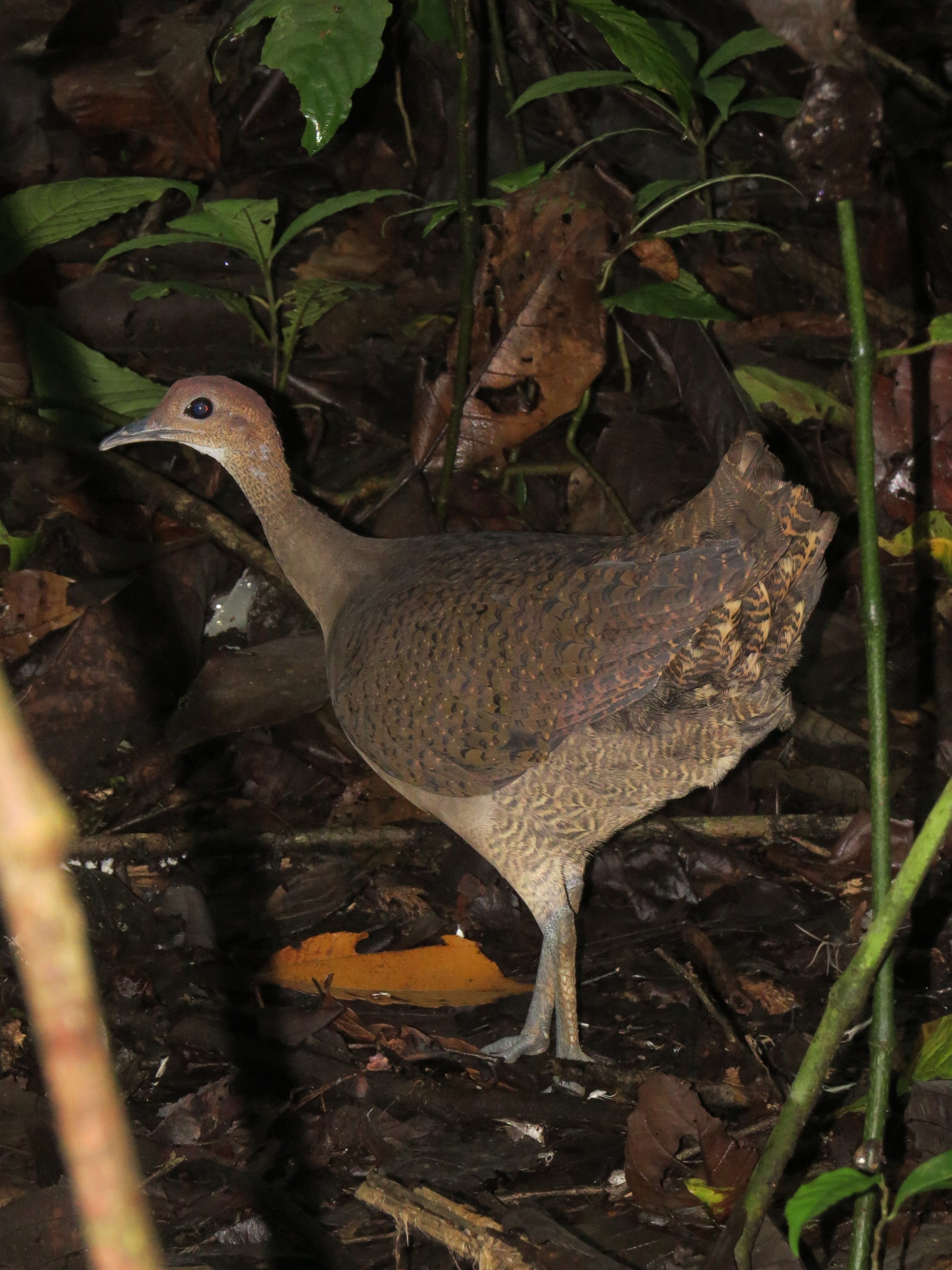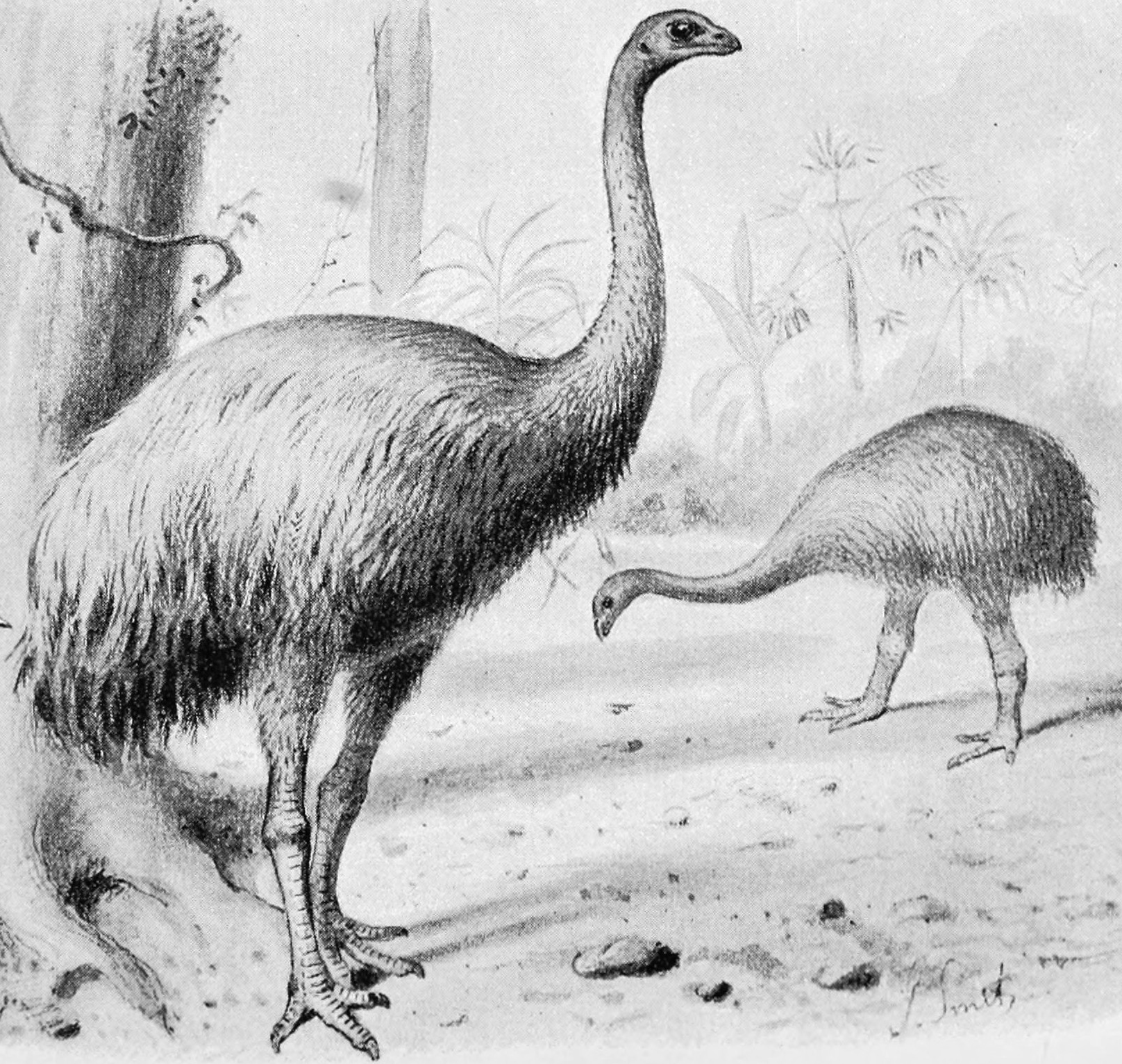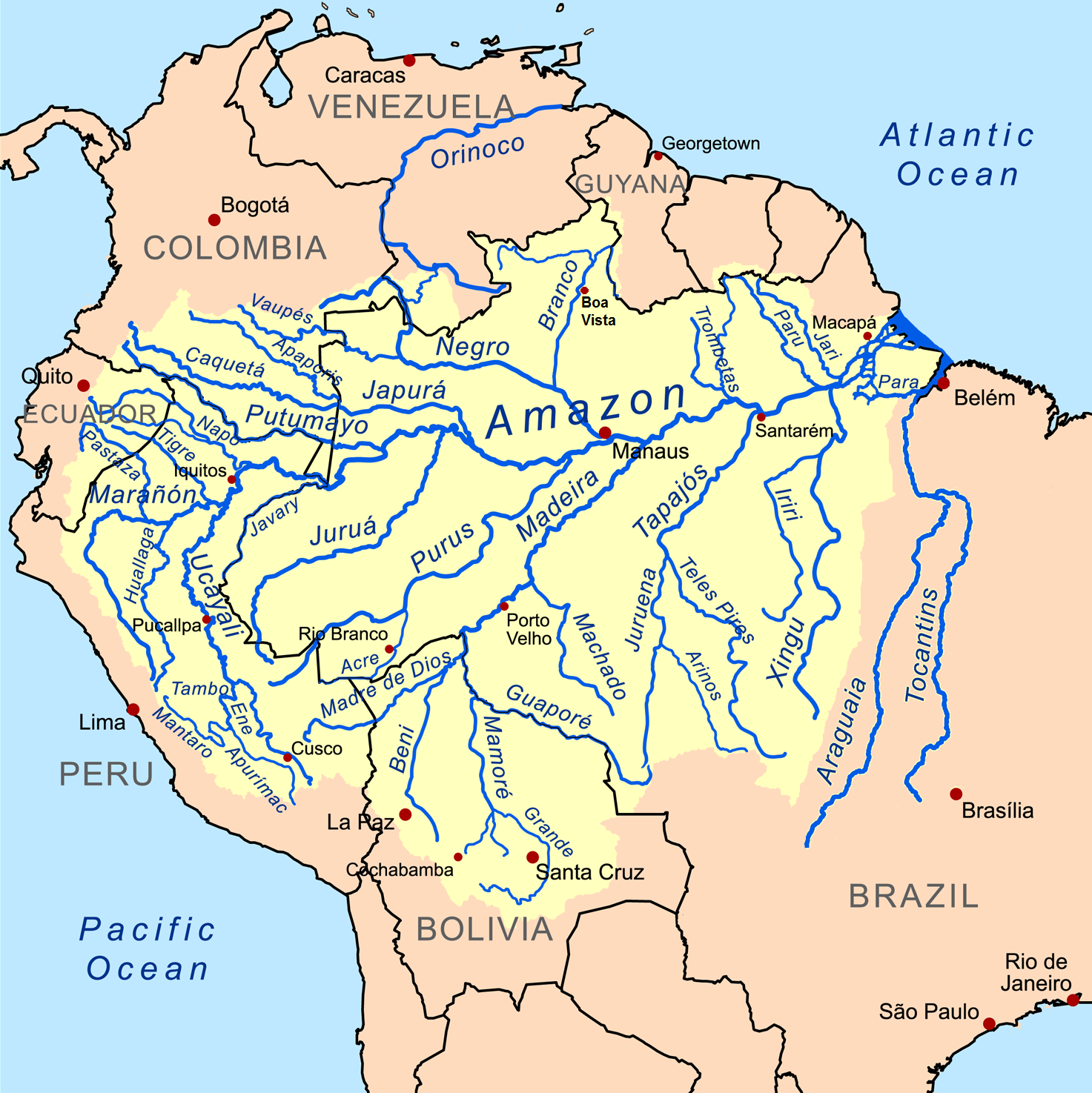|
Tinaminae
Tinaminae, the forest tinamous,Brown, Joseph W. (2005) is one of two subfamily, subfamilies of the family (biology), family Tinamidae, the other being Nothurinae. Description These birds, like other tinamous, are ground birds that prefer to run and walk, but will fly when they must. They differ physiologically by having their nostrils halfway down their bill or more. They range in size from the largest, being the grey tinamou at and the solitary tinamou at , which are also the largest of all the tinamous, to the little tinamou at and and the small-billed tinamou at and . They are a very compact muscular bird, with a slightly wikt:decurved, decurved beak. Their tail is short and rudimentary and appears near non-existent. They have a large amount of feathers on their back and posterior regions. some believe to assist in escaping predators by being able to shed feathers that have been grabbed. Their plumage is drab and cryptic with colors of dark brown, rufous, and buff. They ... [...More Info...] [...Related Items...] OR: [Wikipedia] [Google] [Baidu] |
Tinamou
Tinamous () are members of the order Tinamiformes (), and family Tinamidae (), divided into two distinct subfamily, subfamilies, containing 46 species found in Mexico, Central America, and South America. The word "tinamou" comes from the Carib language, Galibi term for these birds, ''tinamu''. Tinamous are the only living group of Palaeognathae, palaeognaths able to fly, and were traditionally regarded as the sister group of the flightless ratites, but recent work places them well within the ratite radiation as most closely related to the extinct moa of New Zealand, implying flightlessness emerged among ratites multiple times. Tinamous first appear in the fossil record in the Miocene epoch. They are generally sedentary, ground-dwelling and, though not flightless, when possible avoid flight in favour of hiding or running away from danger. They are found in a variety of habitats, ranging from semi-arid climate, semi-arid alpine climate, alpine grasslands to tropical rainforests. The ... [...More Info...] [...Related Items...] OR: [Wikipedia] [Google] [Baidu] |
Nothurinae
Nothurinae or ''aridland tinamous''Brown, Joseph W. (2005) is one of two subfamilies of the Tinamidae family, the other being Tinaminae. It contains eighteen species in six genera. The six genera are: * '' Rhynchotus'' (2 species) * ''Nothoprocta'' (6 species) * ''Nothura'' (5 species) * ''Taoniscus'' (monotypic) - dwarf tinamou * ''Eudromia'' (2 species) * ''Tinamotis'' (2 species) Description These birds, as a member of the tinamou, are ground birds that prefer to run and walk, but will fly when needed. Taxonomy They are related to the ratites (emus, ostriches, kiwis, and rheas), and are placed with them in the Paleognathae. All of these birds evolved from ancient birds that did fly and tinamous are believed to be a still living primitive family closely related to these ancient birds.Davies, S. J. J. F. (2003) Behavior Tinamous eat leaves, buds, small fruits and seeds, and will eats insects for variety. Range and habitat The members of this subfamily live in South America a ... [...More Info...] [...Related Items...] OR: [Wikipedia] [Google] [Baidu] |
Tataupa Tinamou
The Tataupa tinamou (''Crypturellus tataupa'') is a type of tinamou commonly found in dry forest in subtropical and tropical regions in southeastern South America.Clements, J (2007) Naming * ''Crypturellus'' is formed from three Latin or Greek words: ''kruptos'' meaning covered or hidden, ''oura'' meaning tail, and ''ellus'' meaning diminutive. Therefore, ''Crypturellus'' means small hidden tail.Gotch, A. F. (1995) * ''Tataupa'' is a Guarani term, referring to the bird's ashy-colored plumage. Taxonomy All tinamou are from the family Tinamidae, and in the larger scheme are also ratites. Unlike other ratites, tinamous can fly, although in general, they are not strong fliers. All ratites evolved from prehistoric flying birds, and tinamous are the closest living relative of these birds.Davies, S. J. J. F. (2003) Subspecies The Tataupa tinamou has four subspecies as follows: * ''C. t. tataupa'' Nominate race, occurs in eastern Bolivia, southern Brazil, northern Argentina, an ... [...More Info...] [...Related Items...] OR: [Wikipedia] [Google] [Baidu] |
Rheas
The rhea ( ), also known as the ñandu ( ) or South American ostrich, is a South American ratite (flightless bird without a keel (bird anatomy), keel on the sternum bone) of the order Rheiformes. They are distantly related to the two African Ostrich, ostriches and Australia's emu (the largest, second-largest and third-largest living ratites, respectively), with rheas placing just behind the emu in height and overall size. Most taxonomic authorities recognize two Extant taxon, extant species: the Greater rhea, greater or American rhea (''Rhea americana''), and the Darwin's rhea, lesser or Darwin's rhea (''Rhea pennata''). The International Union for Conservation of Nature (IUCN) classifies the puna rhea as another species instead of a subspecies of the lesser rhea. The IUCN currently rates the greater and puna rheas as near-threatened in their native ranges, while Darwin's rhea is of least concern, having recovered from past threats to its survival. In addition, the feral populat ... [...More Info...] [...Related Items...] OR: [Wikipedia] [Google] [Baidu] |
Black Tinamou
The black tinamou (''Tinamus osgoodi'') is a species of ground bird found in humid foothill and montane forest in the Andes of South America. Taxonomy All tinamous are from the family Tinamidae and members of the infraclass Palaeognathae. Tinamous are the only members from their infraclass that aren't ratites, and can even fly, albeit poorly. All paleognaths evolved from prehistoric flying birds, and tinamous are the closest living relative of these birds.Davies, S. J. J. F. (2003) This species of tinamous was first described by Henry Boardman Conover in 1949 based on a specimen from Cusco in Peru. It has two subspecies: * ''T. o. hershkovitzi'': Almost entirely restricted to the Colombian Andes, where found at altitudes between .Clements, J. (2007) It is known from the west slope of the East Andes in the Huila Department, and San José de la Fragua on the east slope of the East Andes in the Caquetá Department. Reports from the northern Central Andes in the Antioquia Depar ... [...More Info...] [...Related Items...] OR: [Wikipedia] [Google] [Baidu] |
Misiones
Misiones (, ''Missions'') is one of the 23 provinces of Argentina, located in the northeastern corner of the country in the Mesopotamia region. It is surrounded by Paraguay to the northwest, Brazil to the north, east and south, and Corrientes Province of Argentina to the southwest. This was an early area of Roman Catholic missionary activity by the Jesuits in what was then called the province of Paraguay, beginning in the early 17th century. In 1984, the ruins of four mission sites in Argentina were designated World Heritage Sites by UNESCO. History Indigenous peoples of various tribes lived in the area of the future province for thousands of years. At the time of European encounter, the area was occupied by the Kaingang and Xokleng tribes, later followed by the Guarani tribe. The first European to visit the region, Sebastian Cabot, discovered Apipé Falls while navigating the Paraná River in December 1527. In 1541 Álvar Núñez Cabeza de Vaca reached the Iguazú Fall ... [...More Info...] [...Related Items...] OR: [Wikipedia] [Google] [Baidu] |
Solitary Tinamou
The solitary tinamou (''Tinamus solitarius'') is a species of paleognath ground bird. This species is native to Atlantic forest of eastern Brazil. Taxonomy All tinamou are from the family Tinamidae, and in the larger scheme are also ratites. Unlike other ratites, tinamous can fly, although in general, they are not strong fliers. All ratites evolved from prehistoric flying birds, and tinamous are the closest living relative of these birds.Davies, S. J. J. F. (2003) Formerly, this bird was divided into two subspecies: ''T. s. pernambucensis'' in north-east Brazil (Pernambuco and Alagoas), and ''T. s. solitarius'' found in south-east Paraguay and extreme north-east Argentina. The former, however, turned out to be not distinct from the nominate but rather individual birds that showed a particular color morph which is now known to also occur elsewhere. Notably, the hue of the back varies between olive and rusty, and the intensity of the lower neck's plumage color also varies. The b ... [...More Info...] [...Related Items...] OR: [Wikipedia] [Google] [Baidu] |
Andes
The Andes ( ), Andes Mountains or Andean Mountain Range (; ) are the List of longest mountain chains on Earth, longest continental mountain range in the world, forming a continuous highland along the western edge of South America. The range is long and wide (widest between 18th parallel south, 18°S and 20th parallel south, 20°S latitude) and has an average height of about . The Andes extend from south to north through seven South American countries: Argentina, Chile, Bolivia, Peru, Ecuador, Colombia, and Venezuela. Along their length, the Andes are split into several ranges, separated by intermediate depression (geology), depressions. The Andes are the location of several high plateaus—some of which host major cities such as Quito, Bogotá, Cali, Arequipa, Medellín, Bucaramanga, Sucre, Mérida, Mérida, Mérida, El Alto, and La Paz. The Altiplano, Altiplano Plateau is the world's second highest after the Tibetan Plateau. These ranges are in turn grouped into three majo ... [...More Info...] [...Related Items...] OR: [Wikipedia] [Google] [Baidu] |
Grey Tinamou
The grey tinamou (''Tinamus tao'') is a type of ground bird native to South America. Four subspecies are recognised. Taxonomy All tinamou are from the family Tinamidae, and in the larger scheme are also ratites. All ratites evolved from prehistoric flying birds, and tinamous are the closest living relative of these birds.Davies, S. J. J. F. (2003) The grey tinamou has several subspecies: * ''T. t. larensis'' with a range in the montane forests of central Colombia and northwestern Venezuela.Clements, J (2007) * ''T. t. kleei'' with a range of south-central Colombia, eastern Ecuador, eastern Peru, eastern Bolivia, and western Brazil. * ''T. t. septentrionalis'' with a range of northeastern Venezuela and possibly northwestern Guyana. * ''T. t. tao'' with a range of north central Brazil, far eastern Peru, and far northwestern Bolivia. Description The gray tinamou is believed to be the largest species among the tinamous. Reported total length is from and possibly as much as .Cabo ... [...More Info...] [...Related Items...] OR: [Wikipedia] [Google] [Baidu] |
Amazon Basin
The Amazon basin is the part of South America drained by the Amazon River and its tributary, tributaries. The Amazon drainage basin covers an area of about , or about 35.5 percent of the South American continent. It is located in the countries of Bolivia, Brazil, Colombia, Ecuador, Guyana, Peru, Suriname, and Venezuela, as well as the territory of French Guiana. Most of the basin is covered by the Amazon rainforest, also known as Amazon rainforest, Amazonia. With a area of dense tropical forest, it is the largest rainforest in the world. Geography The Amazon River begins in the Andes, Andes Mountains at the west of the basin with its main tributary the Marañón River and Apurímac River, Apurimac River in Peru. The highest point in the Drainage divide, watershed of the Amazon is the second biggest peak of Yerupajá at . The Amazon River Basin occupies the entire central and eastern area of South America, lying to the east of the Andes mountain range and extending from th ... [...More Info...] [...Related Items...] OR: [Wikipedia] [Google] [Baidu] |
White-throated Tinamou
The white-throated tinamou (''Tinamus guttatus'') is a species of bird native to the Amazon rainforest of Brazil, northern Bolivia, southeastern Colombia, northeastern Ecuador, eastern Peru and southern Venezuela. Etymology The scientific name for the white-throated tinamou, ''Tinamus guttatus,'' originates from two different languages. ''Tinamus'' was the name given to the tinamou by the Kalina people. ''Guttatus'' means "speckled" in Latin. This may be in reference to the yellowish-white spots on a white-throated tinamou's lower back. Taxonomy All tinamous are from the family Tinamidae and members of the infraclass Palaeognathae. Tinamous are the only members from their infraclass that aren't ratites, and can even fly, albeit poorly. All paleognaths evolved from prehistoric flying birds, and tinamous are the closest living relative of these birds.Davies, S. J. J. F. (2003) The white-throated tinamou is a member of the genus Tinamus, which consists of some of the larger tinamo ... [...More Info...] [...Related Items...] OR: [Wikipedia] [Google] [Baidu] |
Johann Hermann
Johann, or Jean-Frederic, Hermann, or Herrmann, (31 December 1738 in Barr, Alsace – 4 October 1800 in Strasbourg) was a French physician and naturalist Natural history is a domain of inquiry involving organisms, including animals, fungi, and plants, in their natural environment, leaning more towards observational than experimental methods of study. A person who studies natural history is cal .... In 1769 he was appointed professor of medicine at the School of Public Health of Strasbourg, then, in 1778, professor of philosophy, before going on, in 1784, to succeed Jacob Reinbold Spielmann as chair of chemistry, natural history and materia medica. In 1794 he became professor of botany and materia medica in the new School of Medicine. He was the author of ''Tabula affinitatum animalium '' (1783) and ''Observationes zoologicae quibus novae complures'', published posthumously in 1804. His collections and library of 18,000 volumes formed the basis of the Natural History M ... [...More Info...] [...Related Items...] OR: [Wikipedia] [Google] [Baidu] |





